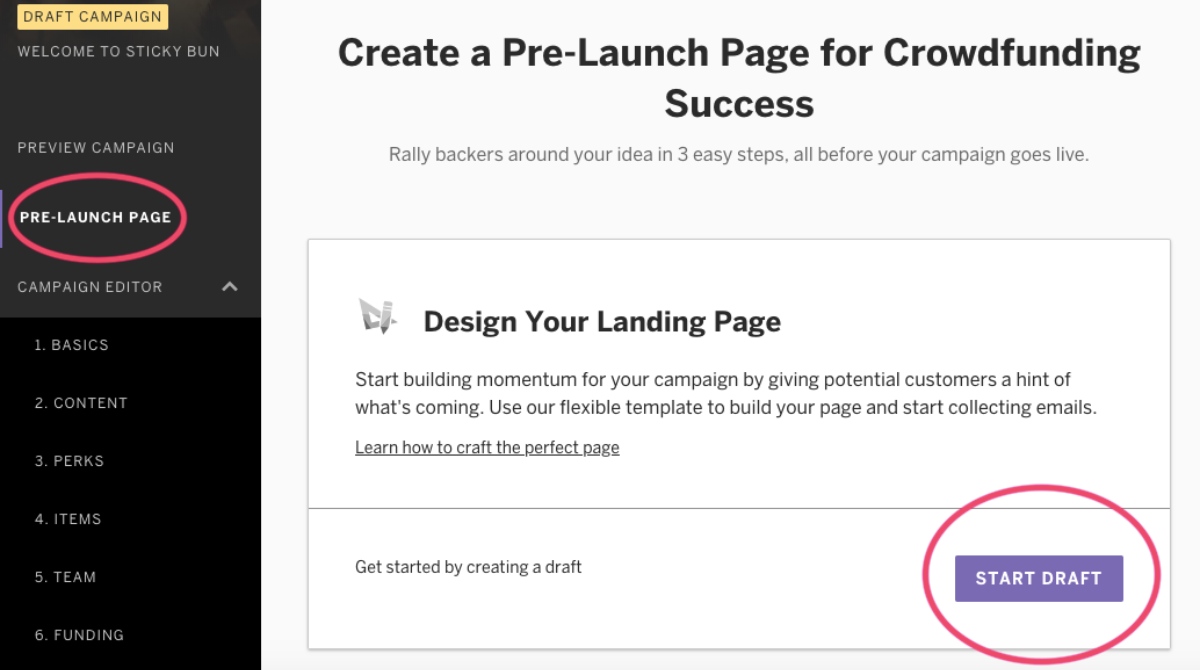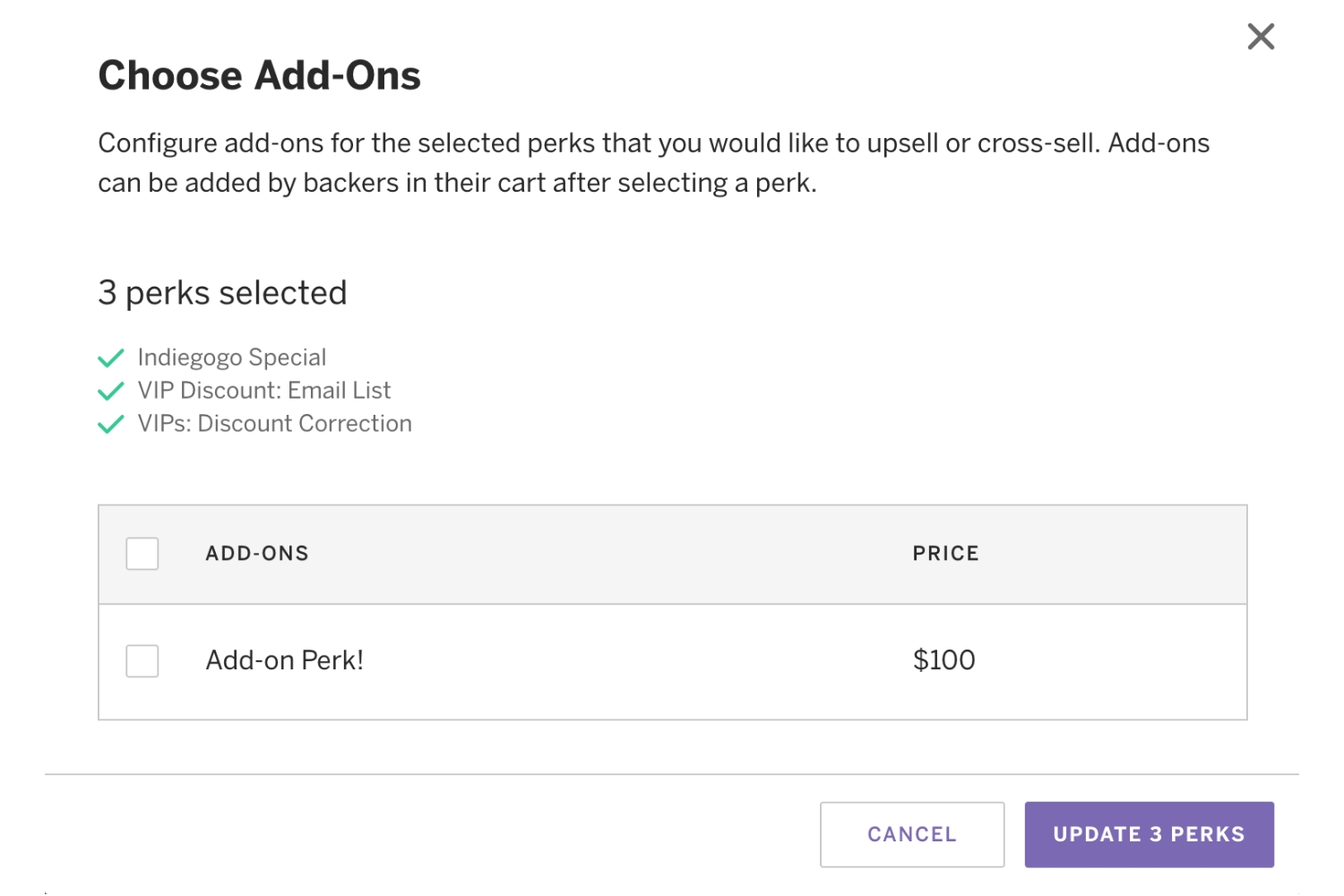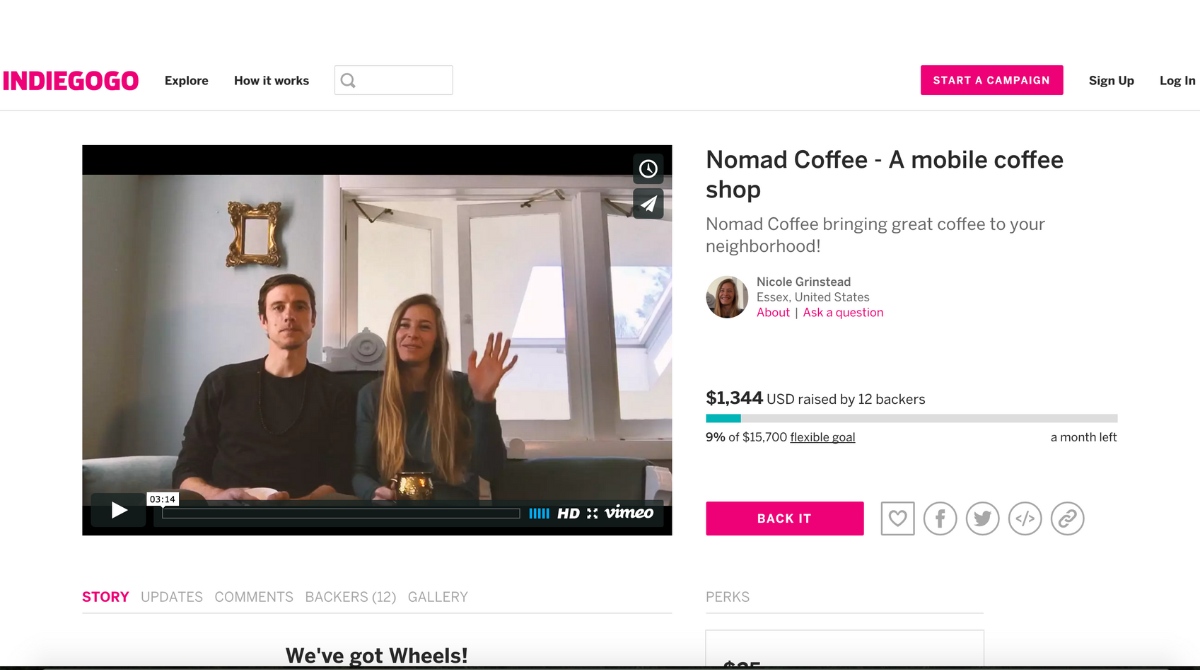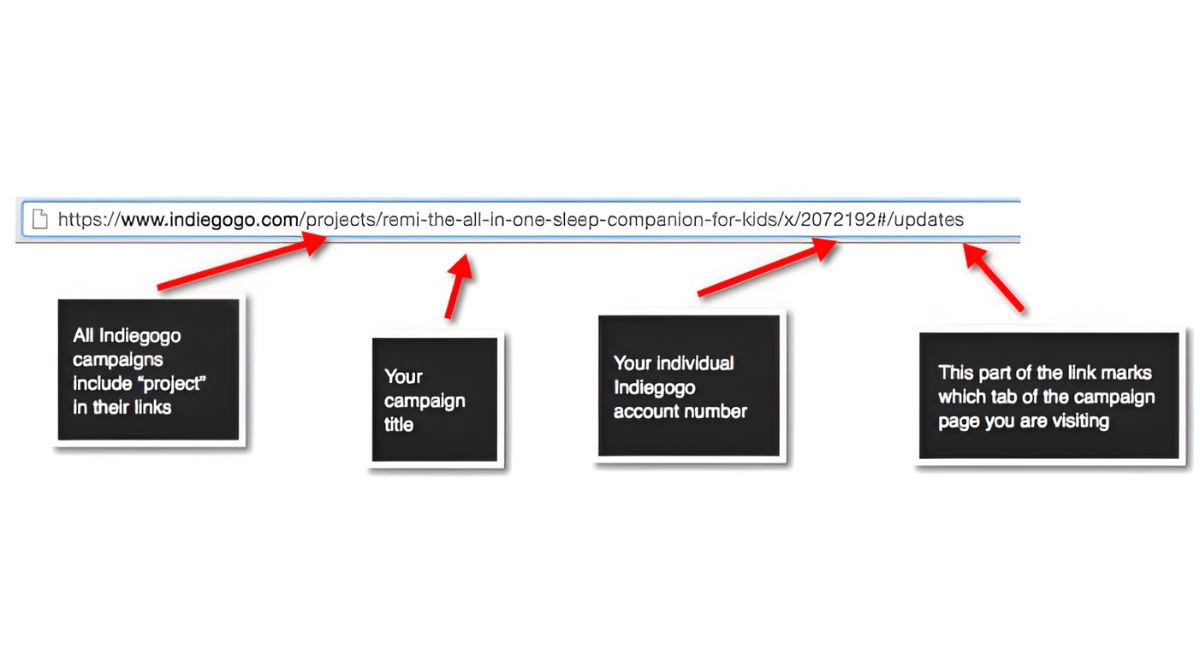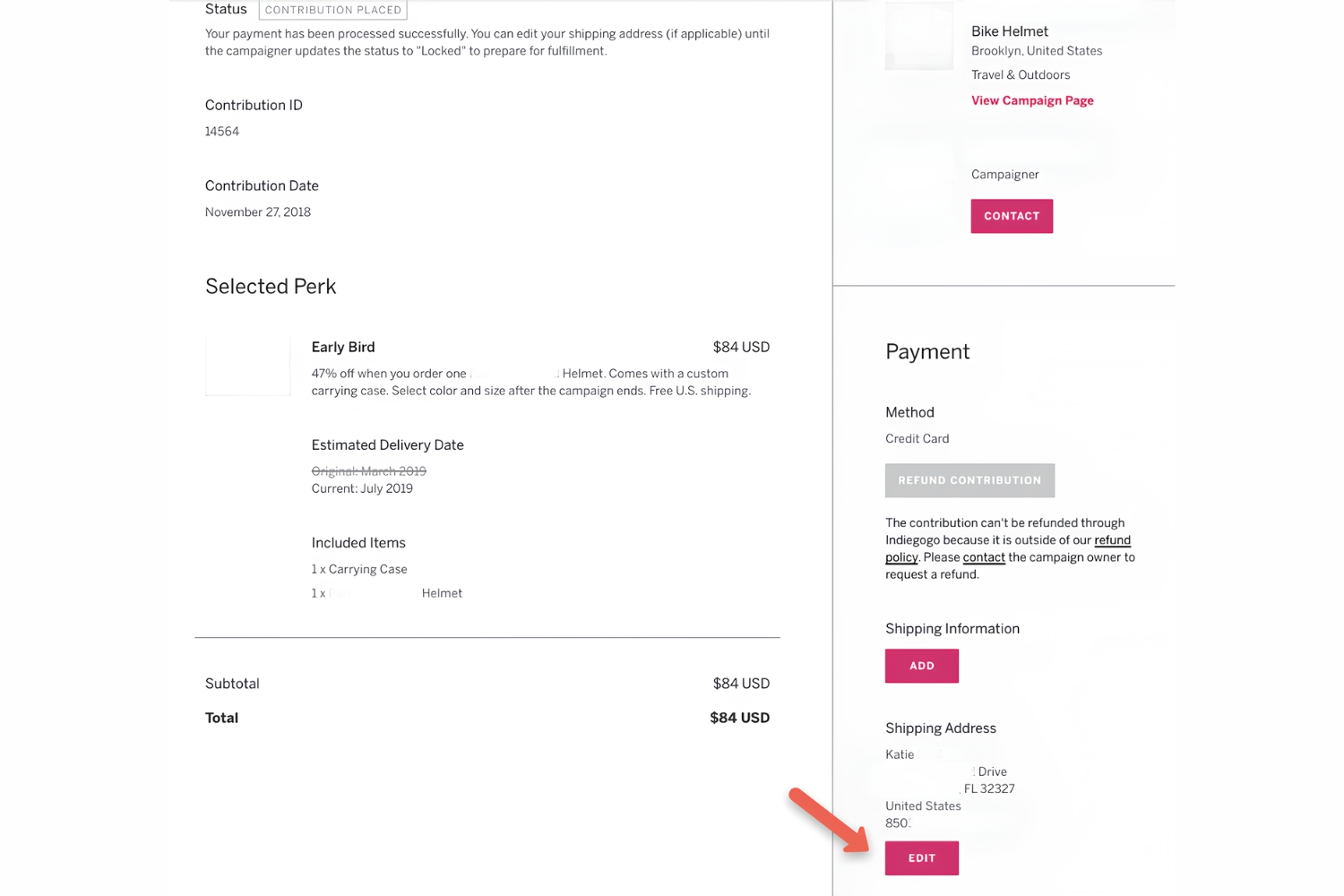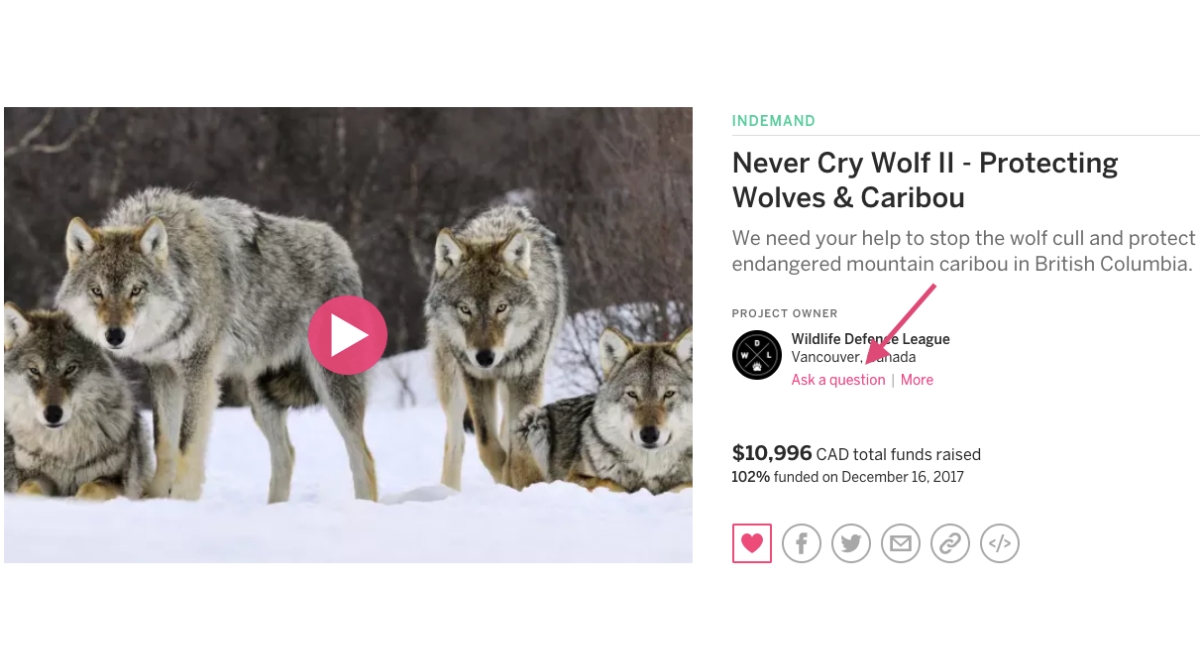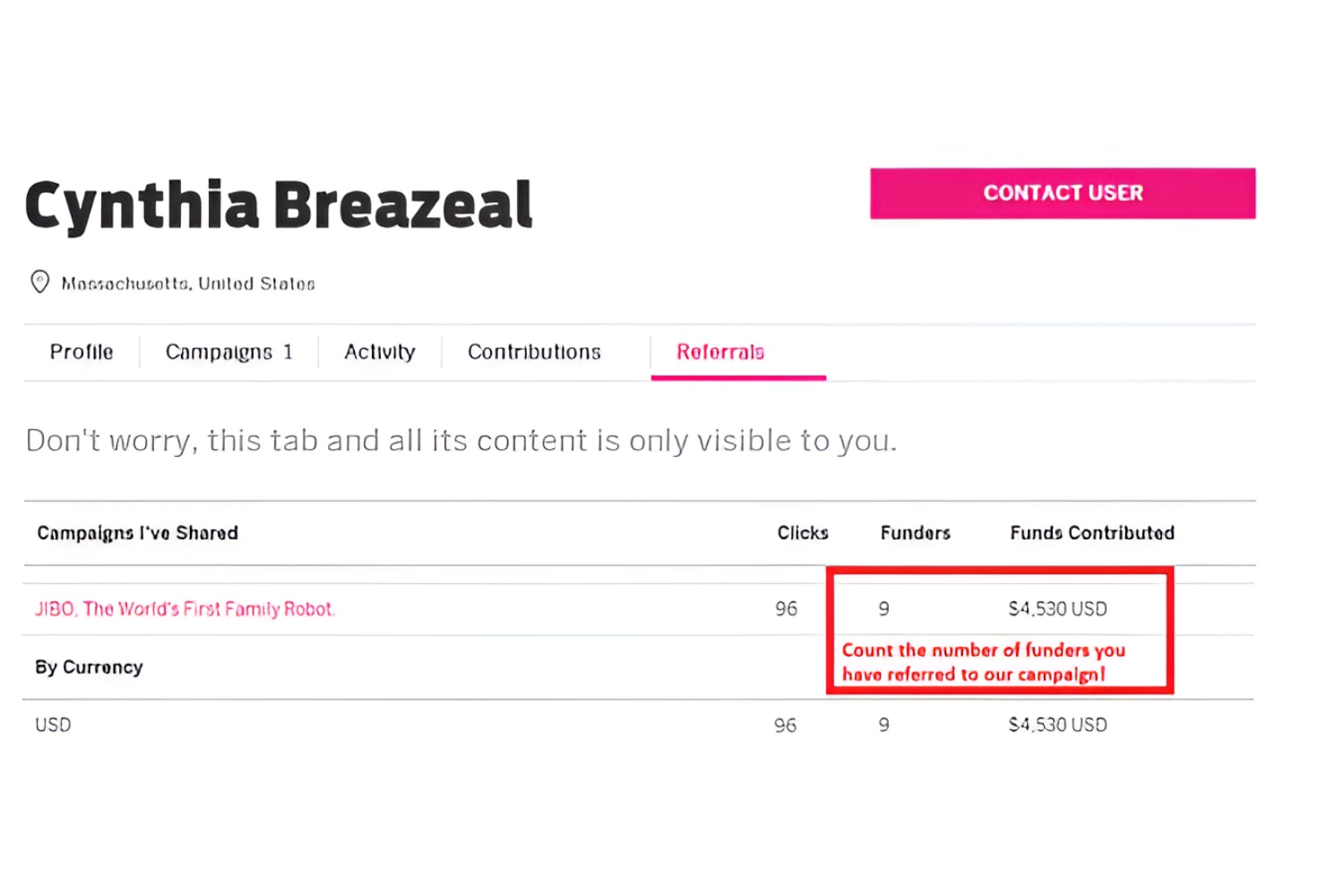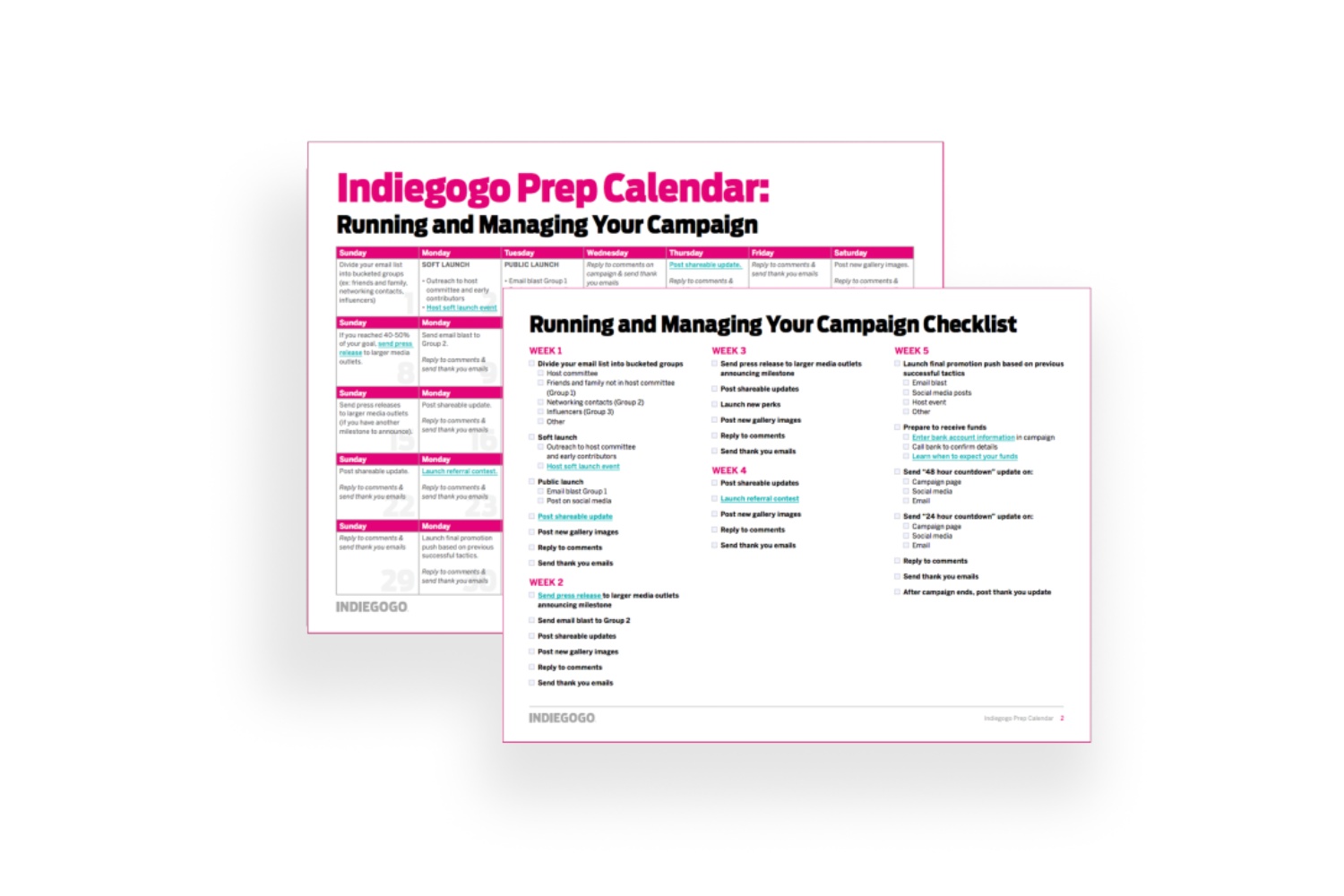Introduction
Indiegogo is a popular crowdfunding platform that has helped countless entrepreneurs, artists, and innovators turn their ideas into reality. However, with so many campaigns competing for attention, it can be challenging to get your project noticed and featured on the front page of Indiegogo. This prime placement can significantly increase exposure and boost your chances of reaching your funding goals.
In this article, we will explore strategies to help you get your campaign on the front page of Indiegogo. We will delve into the factors that contribute to this coveted placement, and provide you with valuable tips to create a compelling campaign that captures the attention of potential backers. By following these guidelines, you can increase your campaign’s visibility, attract more supporters, and ultimately increase your chances of success.
Before we dive into the specifics, it’s important to understand how campaigns are selected for the front page of Indiegogo. The front page features a curated selection of campaigns that Indiegogo believes have the potential to engage and excite their user base. These campaigns are chosen based on various factors, including the quality of the campaign’s content, the level of community engagement, and the campaign’s past performance.
Now that we have a clear understanding of the goal and criteria for getting your campaign on the front page, let’s explore the key strategies and best practices to maximize your chances of success. We will discuss the importance of crafting a captivating campaign story, setting realistic funding goals, utilizing engaging visuals and media, leveraging social media marketing, building a strong supporter community, maximizing exposure with PR and outreach, engaging with your backers, and analyzing and adjusting your campaign strategy as needed.
By implementing these strategies and tactics, you’ll be in a better position to create a campaign that not only catches the attention of Indiegogo’s users but also compels them to contribute to your project. So let’s get started and put your campaign on the path to landing that sought-after spot on the front page of Indiegogo!
Understanding Indiegogo’s Front Page
The front page of Indiegogo is a highly curated section that showcases a selection of campaigns handpicked by the platform. Securing a spot on the front page can significantly boost a campaign’s visibility and increase the chances of attracting more backers. To increase your chances of getting featured, it’s important to understand the factors that Indiegogo considers when selecting campaigns for the front page.
Firstly, Indiegogo’s algorithm assesses the campaign’s performance, including the number of backers, funds raised, and overall popularity. Campaigns that show steady growth and strong community support are more likely to be considered for the front page.
Secondly, the quality of your campaign content plays a crucial role. Indiegogo looks for campaigns that are well-presented, with clear and concise project descriptions, compelling visuals, and engaging media such as videos or product demonstrations. A visually appealing campaign is more likely to catch the attention of potential backers and Indiegogo’s curators.
Furthermore, Indiegogo values campaigns that have active and engaged communities. This means having a strong social media presence, regularly interacting with backers, providing updates, and addressing any questions or concerns. Building a supportive and interactive community around your campaign can demonstrate to Indiegogo that your project has the potential to create a buzz and attract more backers.
Lastly, campaigns that align with current trends, social causes, or innovative ideas are also more likely to receive attention from Indiegogo. If your project is unique, addresses a pressing need, or taps into a popular trend, it has a higher chance of being featured on the front page.
It’s important to note that Indiegogo’s front page is regularly updated, meaning campaigns can be featured for a limited time. Therefore, it’s essential to continuously strive for growth and engagement throughout your campaign to maintain a presence on the front page.
Now that we have a better understanding of what Indiegogo looks for in campaigns for their front page, let’s dive into the strategies and best practices you can implement to increase your chances of securing a coveted spot and maximizing your campaign’s visibility and success.
Tips for Creating a Compelling Campaign
Creating a compelling campaign is crucial for capturing the attention of potential backers and increasing your chances of getting featured on the front page of Indiegogo. Here are some tips to help you craft a campaign that stands out:
- Clearly Define Your Project: Start by clearly and concisely describing your project and its objectives. Use persuasive language to convey the benefits and uniqueness of your product or idea. Make sure your campaign page includes all the relevant details, such as project timeline, target audience, and any rewards or perks for backers.
- Tell a Compelling Story: Storytelling is a powerful tool for connecting with your audience. Share the inspiration behind your project, the problems it solves, or the impact it can make. Use emotional appeals to engage potential backers and make them feel invested in your campaign.
- Utilize Engaging Visuals: High-quality images and videos are essential for capturing attention and conveying your project’s value. Showcase your product, demonstrate its functionality, or share testimonials from satisfied customers. Visuals can help potential backers visualize your project and build trust in your credibility.
- Highlight the Benefits: Clearly communicate the benefits and advantages of supporting your campaign. Explain how your project can improve people’s lives, address a common pain point or provide unique value. This will help potential backers understand why they should support your project and what they stand to gain.
- Offer Attractive Rewards: Design enticing rewards or perks for different contribution levels. Make sure the rewards align with the project and provide value to backers. Consider offering exclusive early-bird discounts, limited-edition items, or customized experiences to incentivize people to contribute and share your campaign with others.
- Create a Strong Call to Action: Clearly state what actions you want potential backers to take. Whether it’s pledging their support, sharing the campaign with others, or subscribing to your mailing list, make it easy for them to engage and take the desired steps. Use persuasive and actionable language to encourage immediate action.
- Build Trust and Credibility: Provide evidence of your project’s viability, such as prototypes, testimonials, or expert endorsements. Including this information can instill confidence in potential backers and help them feel more comfortable supporting your campaign.
- Be Transparent and Authentic: Building trust with potential backers requires honesty and transparency. Clearly communicate your project’s progress, challenges, and any risks involved. Be open about your funding goals and how you plan to use the funds. Show your passion and commitment to the project to connect with potential backers on a personal level.
By implementing these tips, you can create a compelling and persuasive campaign that captures the attention of Indiegogo’s curators and potential backers alike. Remember, the key is to differentiate your campaign from the competition, communicate your project’s value, and engage your audience with an authentic and persuasive narrative.
Crafting a Captivating Campaign Story
A captivating campaign story is essential for attracting the attention and support of potential backers. Your story should resonate with your target audience, evoke emotions, and clearly communicate the purpose and impact of your project. Here are some key elements to consider when crafting a compelling campaign story:
- Start with an Engaging Hook: Grab the reader’s attention from the start with a compelling hook. This could be a thought-provoking question, a powerful statement, or an intriguing anecdote. The goal is to instantly capture their interest and make them want to learn more.
- Share Your Inspiration: Explain the inspiration behind your project. What motivated you to start this venture? Was it a personal experience, a gap in the market, or a desire to make a positive impact? Sharing your journey and the reason behind your project helps create a personal connection with potential backers.
- Address the Problem: Clearly define the problem or need that your project aims to solve. Explain the challenges faced by your target audience and why your solution is unique and superior to existing options. By highlighting the problem, you can create a sense of urgency and demonstrate the relevance and importance of your project.
- Present Your Solution: Describe your project and how it addresses the problem. Explain the features, benefits, and innovation behind your solution. Use descriptive and persuasive language to convey the value and impact of your project for potential backers.
- Showcase the Impact: Emphasize the positive impact that your project can create. Explain how it can improve lives, make a difference in the world, or contribute to a social cause. Use storytelling techniques and real-life examples to paint a vivid picture of the change your project can bring about.
- Include Personal and Emotional Elements: Infuse your campaign story with personal anecdotes, experiences, or testimonials. Share how your own journey and passion have shaped the project. By incorporating emotional elements, you can create a stronger connection with potential backers and make them feel invested in your success.
- Keep it Concise and Engaging: While it’s important to provide enough information, avoid unnecessary details or overly technical language. Keep your story concise, engaging, and easy to understand. Use bullet points, subheadings, and bold text to make key points stand out.
- Show Progress and Future Plans: Demonstrate that your project is moving forward and making progress. Share updates on milestones achieved, partnerships formed, or prototypes developed. Also, outline your future plans and how you intend to bring your project to fruition. This shows potential backers that you have a clear roadmap and are committed to success.
- Include a Call to Action: End your campaign story with a clear call to action. Encourage readers to support your project by pledging, sharing, and spreading the word. Make it easy for them to take the next step and become part of your project’s journey.
By crafting a captivating campaign story that combines personal experiences, a compelling problem-solution narrative, and a focus on the positive impact, you can engage potential backers and increase the likelihood of attracting their support for your project.
Setting Realistic Funding Goals
Setting realistic funding goals is crucial for the success of your Indiegogo campaign. While it’s natural to aim for the stars, it’s important to strike a balance between ambition and practicality. Here are some key considerations when setting funding goals for your campaign:
- Evaluate Project Costs: Begin by thoroughly assessing the costs associated with your project. Consider manufacturing expenses, marketing and promotion costs, shipping and fulfillment expenses, and any service fees charged by Indiegogo. Understanding the true costs will help you set a realistic funding goal that covers all necessary expenses.
- Research Similar Campaigns: Look at successful campaigns in your project’s niche or industry. Analyze their funding goals and the amount raised. This can give you a sense of what is achievable within your target market and help you set a goal that aligns with similar projects.
- Consider Your Project’s Appeal: Evaluate the demand and potential market size for your project. Gauge the level of interest and excitement among your target audience. If you have a unique and innovative idea, you may have the potential to attract more backers and exceed your initial funding goal.
- Be Realistic and Transparent: It’s important to set a funding goal that is attainable within a given timeframe. Remember that the majority of campaigns do not reach their goals overnight. By setting a realistic goal, you can create a sense of credibility and trust with potential backers.
- Create Stretch Goals: While setting a realistic funding goal is essential, you can also create stretch goals beyond your initial target. These goals can be set at higher funding milestones and offer additional rewards or features to entice backers to continue supporting your campaign even after the initial goal is reached. Stretch goals can help create excitement and encourage backers to increase their contributions.
- Factor in Indiegogo’s Platform Fees: Keep in mind that Indiegogo charges a platform fee on the funds you raise. Make sure to factor in these fees when setting your funding goal to ensure that you have enough funds to cover your expenses after deducting the fees.
- Consider Post-Campaign Costs: It’s essential to plan for the post-campaign expenses, such as production, fulfillment, and ongoing customer support. Ensure that your funding goal allows for these costs to avoid any financial strain once the campaign ends.
- Communicate Funding Allocation: Clearly communicate to potential backers how you plan to allocate the funds you raise. Break down the budget and explain how the funds will be used to bring your project to fruition. This transparency can build trust and confidence among backers.
By setting realistic funding goals based on careful research, accurate cost analysis, and a thorough understanding of your project’s market potential, you can increase your chances of reaching your goal and successfully funding your Indiegogo campaign.
Utilizing Engaging Visuals and Media
Visuals and media are powerful tools for capturing attention, conveying information, and evoking emotions. In the context of an Indiegogo campaign, utilizing engaging visuals and media can greatly enhance your chances of attracting backers and getting featured on the front page. Here are some tips on how to effectively use visuals and media:
- Create an Eye-Catching Campaign Banner: The first thing potential backers see when they visit your campaign page is the banner image. Make sure it is visually appealing, represents your project accurately, and grabs their attention. Use high-quality graphics, captivating images, and bold text that clearly conveys the essence of your project.
- Include High-Quality Images and Videos: Visuals play a crucial role in showcasing your project and generating excitement among potential backers. Include clear, high-resolution images that highlight the features and benefits of your product or idea. If possible, include videos that provide demonstrations, testimonials, or behind-the-scenes footage. Videos are particularly effective in engaging and informing potential backers.
- Create a Compelling Project Video: Your project video is a key element in capturing the attention of potential backers. Make it engaging, concise, and well-produced. Tell your story, explain the problem you’re solving, showcase your solution, and demonstrate the impact your project can make. Keep the video focused and make sure to communicate the key messages effectively.
- Add Captions and Subtitles: Consider adding captions or subtitles to your videos to make them accessible to a wider audience. This can be particularly helpful for viewers who may have hearing impairments or prefer to watch videos without sound.
- Use Infographics and Visuals to Explain Complex Concepts: If your project involves complex ideas or data, consider using infographics or visual representations to simplify and visually communicate these concepts. This can help potential backers understand your project more easily and quickly engage with your campaign page.
- Showcase Prototypes and Product Renders: If you have a physical product, include images or renders that showcase your prototype, highlighting its design, features, and functionality. Seeing a tangible representation of your product can increase confidence among potential backers and give them a clearer understanding of what they are supporting.
- Include Testimonials and Reviews: If you have received positive feedback or testimonials from early adopters or influencers, prominently feature them on your campaign page. Positive endorsements can help build trust and credibility with potential backers.
- Layout Your Story Through Visuals: Use visuals to complement your campaign story and make it more engaging. Break up the text with images, illustrations, or graphics that illustrate key points or stages of your project’s development. This will make your campaign page more visually appealing and reader-friendly.
- Optimize Visuals for Mobile Devices: Ensure that your images and videos are mobile-friendly, as many potential backers browse Indiegogo campaigns on their smartphones or tablets. Optimize the file sizes to ensure quick loading times, and check that the visuals maintain their quality and clarity on smaller screens.
- Encourage User-Generated Content: Once your campaign gains traction, encourage your backers and supporters to share their own photos, videos, and testimonials related to your project. User-generated content can add authenticity and social proof to your campaign, attracting more potential backers.
By utilizing engaging visuals and media effectively, you can significantly enhance the appeal and impact of your Indiegogo campaign, capture the attention of potential backers, and increase your chances of reaching your funding goals.
Leveraging Social Media Marketing
Social media platforms offer a powerful and cost-effective way to reach a wide audience and promote your Indiegogo campaign. Leveraging social media marketing can help you increase visibility, generate buzz, and attract potential backers. Here are some key strategies for effectively utilizing social media to support your Indiegogo campaign:
- Choose the Right Platforms: Identify the social media platforms that align with your target audience and project. Focus on platforms where your potential backers are likely to be active. Popular options include Facebook, Instagram, Twitter, LinkedIn, and YouTube.
- Create Compelling and Shareable Content: Develop engaging and visually appealing content that grabs the attention of your audience. This can include eye-catching images, captivating videos, informative blog posts, or user-generated content. Make sure the content is shareable, inviting your audience to spread the word about your campaign.
- Build a Strong Social Media Presence: Create dedicated social media profiles for your campaign and consistently engage with your audience. Post updates, respond to comments and messages, and actively participate in relevant discussions or groups. Building an authentic and engaged following will help you cultivate a supportive community around your campaign.
- Utilize Campaign Hashtags: Create a unique campaign hashtag that reflects your project and use it consistently across social media platforms. Encourage your followers and backers to use the hashtag when sharing your campaign or related content. This will help create a sense of community and make it easier to track and engage with user-generated content.
- Collaborate with Influencers: Identify influencers or industry experts who align with your project and have a significant following. Engage with them and explore opportunities for collaboration, such as guest blog posts, interviews, or social media takeovers. Their endorsement can introduce your campaign to a wider audience and lend credibility to your project.
- Run Social Media Contests or Giveaways: Create excitement and encourage engagement by running contests or giveaways on your social media platforms. Offer exclusive perks or rewards to those who participate, such as early-bird discounts or limited-edition items. This can help generate buzz, increase visibility, and attract new backers.
- Engage with Your Audience: Actively engage with your followers and supporters by responding to comments, messages, and inquiries in a timely manner. Show appreciation for their support and address any concerns or questions they may have. By fostering a two-way conversation, you can build trust and loyalty among your audience.
- Share Updates and Milestones: Regularly update your social media followers on the progress of your campaign. Share milestones, achievements, and any new developments. Use visuals and storytelling techniques to make the updates engaging and shareable. This will keep your audience excited and involved in your campaign journey.
- Encourage Outward Sharing: Make it easy for your backers and supporters to share your campaign on their own social media platforms. Include social sharing buttons on your campaign page and in your communications. You can also provide pre-written social media posts or graphics that backers can use to promote your project.
- Utilize Paid Advertising: Consider allocating a portion of your campaign budget to targeted social media advertising. Platforms like Facebook and Instagram offer robust advertising options that allow you to reach specific demographics and interests. Paid advertising can help boost your campaign’s visibility and attract a wider audience.
By implementing these social media marketing strategies, you can effectively leverage the power of social media platforms to increase awareness, engage with potential backers, and drive more traffic to your Indiegogo campaign.
Building a Strong Supporter Community
Building a strong supporter community is essential for the success of your Indiegogo campaign. A dedicated and engaged community can not only provide financial backing but also become brand ambassadors, spreading the word about your project and attracting more backers. Here are some strategies to help you build a strong supporter community:
- Communicate and Engage: Actively communicate with your backers and supporters. Respond to messages and comments promptly, and address any concerns or questions. Keep them updated on the progress of your campaign and express gratitude for their support. Engaging with your community fosters a sense of belonging and loyalty.
- Create an Online Forum: Establish an online forum or community platform where your supporters can connect, share ideas, and ask questions. This can be a dedicated website, a Facebook group, or a forum on your campaign page. Encourage discussions, provide valuable resources, and facilitate conversations among backers.
- Showcase Backer Contributions: Recognize and highlight the contributions of your backers. Feature them in social media posts or on your campaign page. You can also create a dedicated section on your website to showcase testimonials or success stories of your supporters. This not only shows appreciation but also encourages others to join the community.
- Offer Backer-Exclusive Benefits: Provide exclusive benefits or perks to your backers as a way to reward their support. This can include early access to product updates, special discounts, or limited-edition items. Backer-only perks make supporters feel valued and incentivize them to continue promoting your campaign.
- Encourage User-Generated Content: Encourage your backers to create and share content related to your project. This can include testimonials, unboxing videos, or photos of them using your product. User-generated content not only adds authenticity but also helps to expand the reach of your campaign as your supporters share their experiences with their own networks.
- Host Live Events or Q&A Sessions: Organize live events or Q&A sessions where you can interact with your community in real-time. This can be done through live streaming on social media platforms or hosting webinars. It allows you to answer questions, address concerns, and provide a personal touch to your engagement with your supporters.
- Reward Referrals: Encourage your community to refer their friends and family to your campaign. Offer incentives, such as exclusive perks or discounts, for successful referrals. This creates a sense of excitement and encourages your supporters to actively promote your project to their networks.
- Offer Backer Input and Involvement: Seek input from your backers and involve them in the decision-making process when feasible. Conduct surveys, polls, or feedback sessions to gather their opinions. This gives your supporters a sense of ownership and makes them more invested in your project’s success.
- Provide Transparent Updates: Keep your community informed about the progress of your campaign, any challenges you encounter, and how you’re addressing them. Transparency builds trust, and open communication creates a shared sense of purpose between you and your supporters.
- Show Appreciation: Regularly express gratitude to your community for their support. Acknowledge individual backers through personal messages or by publicly thanking them. Consider providing special recognition or rewards to your most dedicated and active supporters.
By implementing these strategies, you can foster a strong and engaged supporter community around your Indiegogo campaign. Building a community that is passionate about your project and actively advocates for it will significantly increase your chances of reaching your funding goals.
Maximizing Exposure with PR and Outreach
Public relations (PR) and outreach can be effective tools for maximizing exposure and generating buzz for your Indiegogo campaign. By strategically reaching out to media outlets, influencers, and relevant networks, you can increase your campaign’s visibility and attract a wider audience. Here are some strategies to help you maximize exposure through PR and outreach:
- Identify Relevant Media Outlets: Research and compile a list of media outlets that are relevant to your project. These can include local or national newspapers, magazines, blogs, podcasts, and online publications. Look for outlets that cover topics related to your campaign’s niche or industry.
- Write a Compelling Press Release: Craft a well-written, attention-grabbing press release that highlights the key aspects of your campaign, such as its unique features, benefits, and impact. Make sure to include relevant images and contact information. Distribute the press release to your targeted media outlets to increase the chances of getting media coverage.
- Build Relationships with Journalists and Bloggers: Develop relationships with journalists, bloggers, and influencers who cover topics aligned with your project. Engage with their content, share insights, and comment on their articles or posts. This can help establish a connection and make it easier to pitch your story or project to them in the future.
- Reach out to Influencers: Identify social media influencers or content creators who have a significant following in your project’s niche. Send them personalized messages, offering an exclusive sneak peek of your product or an opportunity to collaborate. Their endorsement or mention can significantly increase your campaign’s visibility and credibility.
- Guest Blog or Contribute as a Thought Leader: Offer to write guest blog posts or contribute articles to reputable websites or publications in your industry. This positions you as a thought leader and allows you to share your expertise while promoting your campaign. Include a bio and link to your Indiegogo campaign to drive traffic and generate interest.
- Utilize Social Media Influencers: Collaborate with social media influencers who have a large following and influence in your target market. Arrange sponsored posts or brand partnerships to promote your campaign to their audience. This can help generate buzz, increase exposure, and attract potential backers who trust the recommendations of these influencers.
- Engage with Online Communities and Forums: Find online communities and forums where your target audience congregates. Engage in discussions, offer valuable insights, and provide genuine help or advice. Establish yourself as a knowledgeable and trustworthy member of the community and subtly promote your campaign when appropriate.
- Participate in Industry Events and Conferences: Take advantage of industry events and conferences related to your project. Attend as a speaker or exhibitor if possible, showcasing your project and networking with relevant professionals and potential backers. Use these opportunities to share your story and attract media coverage.
- Collaborate with Complementary Campaigns: Identify other Indiegogo campaigns that complement your project or share a similar target audience. Explore collaboration opportunities, such as cross-promoting each other’s campaigns or creating joint marketing initiatives. This can allow you to tap into each other’s networks and expand your reach.
- Offer Exclusive Interviews or Giveaways: Offer exclusive interviews or giveaways to media outlets, influencers, or community members. This can create buzz and encourage them to feature your campaign in their articles, social media posts, or podcasts. Exclusive content or perks provide an incentive for them to showcase your project.
By proactively leveraging PR and outreach strategies, you can maximize exposure for your Indiegogo campaign, reach a wider audience, and generate excitement and interest in your project.
Engaging with Your Backers
Engaging with your backers is crucial for building strong relationships and creating a sense of community around your Indiegogo campaign. By fostering open communication, addressing concerns, and showing appreciation, you can establish trust and loyalty among your backers. Here are some strategies to effectively engage with your backers:
- Respond to Comments and Messages Promptly: Be proactive in responding to comments and messages from your backers. Whether it’s on your campaign page, social media platforms, or via email, make sure to address their questions, concerns, and feedback in a timely manner. Prompt responses help build trust and show that you value their support.
- Provide Regular Updates: Keep your backers informed about the progress of your campaign. Provide updates on milestones achieved, challenges faced, and future plans. This demonstrates transparency and keeps your backers engaged and excited about your project. Regular updates can be shared through campaign updates, social media posts, or newsletters.
- Show Appreciation: Express gratitude and show appreciation to your backers for their support. Publicly thank them on social media or in campaign updates. Consider offering exclusive perks or rewards as a gesture of gratitude. Showing appreciation makes your backers feel valued and strengthens their connection to your project.
- Create Backer-Only Experiences: Offer exclusive experiences or privileges to your backers. This can include access to behind-the-scenes content, previews of new features, or the opportunity to participate in product testing. By providing unique experiences, you make your backers feel special and appreciated, fostering a deeper sense of engagement.
- Encourage User-Generated Content: Encourage your backers to share their experiences and create user-generated content related to your project. This can include testimonials, unboxing videos, or photos of them using your product. By celebrating and sharing their content, you not only amplify their voices but also foster a sense of community among your backers.
- Offer Backer Surveys and Feedback Opportunities: Seek input from your backers through surveys or feedback sessions. Ask for their opinions on product features, rewards, or future plans. Gathering feedback shows that you value their input and are committed to continuous improvement. Incorporating their ideas can also increase their sense of ownership in your project.
- Host Backer Q&A Sessions or Webinars: Organize live Q&A sessions or webinars exclusively for your backers. This gives them an opportunity to ask questions, provide feedback, and receive updates directly from you. It also allows for a more personal and interactive connection with your backers, strengthening the sense of community.
- Share Backer Success Stories: Highlight the success stories of your backers. Showcase how your project has positively impacted their lives or helped them achieve their goals. By sharing these stories, you not only celebrate their support but also inspire others to join your campaign.
- Attend to Backer Concerns: Address any concerns or issues raised by your backers promptly and professionally. If there are delays or unexpected challenges, communicate transparently and provide regular updates on how you are resolving the situation. Handling concerns with transparency and empathy builds trust and maintains strong relationships with your backers.
- Offer Post-Campaign Support: Once your campaign ends, continue to provide support to your backers. Keep them informed about production timelines, shipping updates, and any additional information they may need. Respond to their inquiries and provide assistance to ensure a smooth fulfillment process. Exceptional post-campaign support strengthens the trust and loyalty of your backers.
By actively engaging with your backers and creating a welcoming and responsive environment, you can build a dedicated and supportive community around your Indiegogo campaign. Strong engagement fosters long-term relationships, encourages word-of-mouth promotion, and increases the chances of repeat support and future success.
Analyzing and Adjusting Your Campaign Strategy
Analyzing and adjusting your campaign strategy is essential for maximizing the success of your Indiegogo campaign. By closely monitoring your campaign’s performance, analyzing data, and making necessary adjustments, you can optimize your approach and improve your chances of reaching your funding goals. Here are some strategies for effectively analyzing and adjusting your campaign strategy:
- Track Key Metrics: Monitor and track important metrics throughout your campaign, such as the number of backers, the funding progress, the traffic sources, and engagement levels. Indiegogo’s campaign dashboard provides valuable insights. By understanding these metrics, you can identify trends, spot areas for improvement, and make data-driven decisions.
- Analyze Backer Demographics: Pay attention to the demographics of your backers, including their locations, age groups, and interests. This helps you understand your target audience better and refine your marketing and communication strategies accordingly. Adjust your messaging, visuals, and marketing channels to better resonate with your audience.
- Assess Fundraising Trends: Analyze the fundraising trends of your campaign over time. Identify peak and slow periods in terms of contributions. Use this information to plan timely promotional activities, launch special offers or stretch goals during lulls, and spur momentum during peak periods. Adjust your funding expectations and strategies based on these trends.
- Engage with Backer Feedback: Pay attention to the feedback and comments from your backers. This provides valuable insights into their needs, concerns, and expectations. Address their feedback promptly and make adjustments if necessary. Engaging with your backers shows that you value their opinions and fosters a sense of community around your campaign.
- Optimize Marketing Channels: Assess the performance of your marketing channels and compare the effectiveness of different strategies. Identify the platforms or channels that drive the most traffic and conversions. Focus your efforts on the most successful channels to maximize your reach and engagement. Experiment with new channels or tactics to diversify your promotional efforts.
- Test and Refine Messaging: Experiment with different messaging and positioning to see what resonates best with your audience. Test variations of your campaign page headlines, taglines, and call-to-action statements to find the most compelling combination. Use A/B testing to compare different versions and measure their impact on conversion rates.
- Consider Paid Advertising: Evaluate the effectiveness of paid advertising campaigns, such as social media ads or search engine marketing. Track the return on investment (ROI) of your ad campaigns and assess their impact on your campaign’s performance. Adjust your ad targeting, messaging, or budget based on insights gained from the data.
- Monitor Competitor Campaigns: Keep an eye on campaigns similar to yours, especially those that are successful or gaining traction. Analyze their strategies, messaging, and promotional activities. Identify unique selling points that set your project apart and find ways to highlight those aspects in your campaign. Learn from successful campaigns and adapt their tactics to suit your project.
- Stay Agile and Adapt: The crowdfunding landscape is dynamic, and unforeseen challenges may arise during your campaign. Stay agile and be ready to adjust your strategies based on feedback, market trends, or external factors. Adapt your messaging, rewards, or outreach efforts to respond to the evolving needs of your backers and maximize your campaign’s success.
- Seek Expert Advice: When in doubt, seek guidance from experienced campaigners, crowdfunding consultants, or Indiegogo support. They can provide valuable insights, share best practices, and help you navigate any challenges or uncertainties you may encounter during your campaign.
By continuously analyzing and adjusting your campaign strategy based on data and feedback, you can optimize your approach, attract more backers, and increase your chances of reaching your funding goals on Indiegogo.
Conclusion
Launching a successful campaign on Indiegogo requires careful planning, effective execution, and continuous optimization. By implementing the strategies outlined in this article, you can increase your chances of getting featured on the front page of Indiegogo, attracting more backers, and reaching your funding goals.
Understanding how Indiegogo’s front page works and the factors that contribute to getting featured is essential. Crafting a compelling campaign story, setting realistic funding goals, and utilizing engaging visuals and media are key elements in capturing the attention of potential backers. Leveraging social media marketing helps expand your reach and build a strong community of supporters.
Maximizing exposure with PR and outreach, engaging with your backer community, and analyzing and adjusting your campaign strategy based on data and feedback are crucial for maintaining momentum and optimizing your results. Remember, success on Indiegogo is not just about reaching your funding goals, but also about building relationships, fostering engagement, and creating a community around your project.
Throughout your campaign, remain adaptable and responsive to the dynamics of the crowdfunding landscape. Stay connected with your backers, address their feedback and concerns, and regularly update them on your progress. By nurturing genuine connections and providing exceptional support, you can cultivate a loyal group of backers who will not only support your current campaign but also become advocates for your future endeavors.
Always remember that crowdfunding is not just about funding a project; it’s about sharing your vision, building a community, and making a meaningful impact. Embrace the journey, stay passionate, and continue to innovate even beyond the duration of your Indiegogo campaign.







